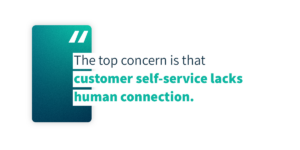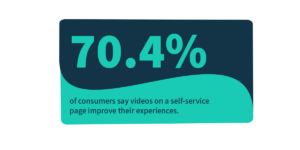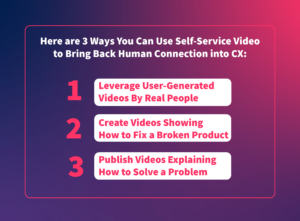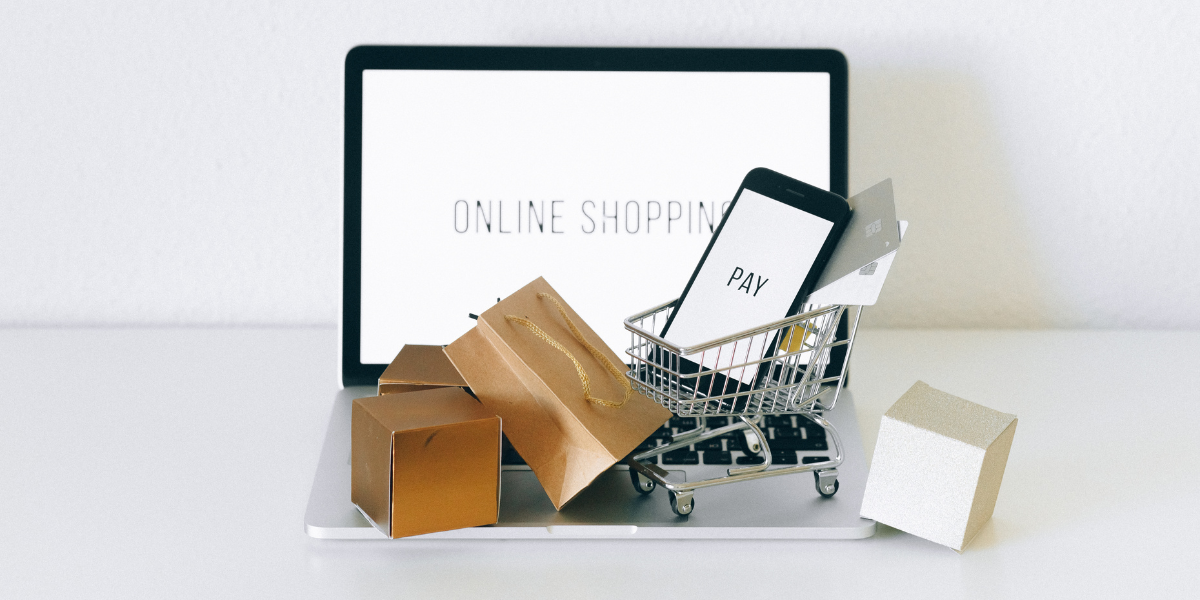The future of customer experience (CX) is self-service.
We know this because of the overwhelming demand for quick and convenient customer support.
Consumers like you, and I want instant answers to questions. We despise having our time wasted. It’s why long wait times and unhelpful chatbots lead to our utter frustration and dissatisfaction.
To ease friction, brands in every industry are turning to customer self-service.
Rather than having consumers deal with traditional support channels (like chatbots or call centers), brands offer automated services that help consumers resolve their own problems—for example, FAQ pages on a website or self-ordering screens in-store. The idea is to eliminate frustrating customer experiences by empowering consumers to help themselves.
However, while self-service is intended to be a positive solution, we’ve found that it may have the opposite effect on consumers. Surprisingly, some feel self-service hurts their customer experience rather than improves it.
Here are Common Consumer Concerns with Self-Service in CX
The top concern is that customer self-service lacks human connection. We’ve found that many consumers crave interactions with real people. So when brands eliminate face-to-face interaction in favour of automated services, consumers feel uneasy.

But that’s not the only concern with self-service. Here are a few we’re hearing from consumers first-hand:
- There’s a lack of human interaction and connection
- Self-service technology is confusing to use
- Consumers feel forced to use technology even if they’re uncomfortable or intimidated by it
- There are longer wait times because people are unfamiliar with how to use self-service
- There’s a noticeable lack of enthusiasm from employees because they are not serving customers directly
- Self-service technology isn’t optimized for accessibility (ex. Height of self-ordering screens is too high for people in wheelchairs)
Whether you relate to any of these concerns or not, it’s easy to see where consumers are coming from. Unfortunately, by trying to ease points of friction, brands have unintentionally created new ones.
While the self-service trend in CX isn’t going away, it doesn’t mean it can’t improve, especially when it comes to building human connections.
There are many ways to do this – one of them is with self-service video.

Using video as self-service content offers the best of both worlds – convenient and instant service with a human touch.
With video, consumers feel like a real person supports them without the frustrating call center experience. According to our study, 70.4% of consumers say videos on a self-service page improve their experiences.
Here are 3 Ways You Can Use Self-Service Video to Bring Back Human Connection into CX:
1. Produce Trusted Videos By Real People
User-generated video content is one of the most effective ways to bring human connection back into the self-service customer experience.
Skip over-the-top production for authentic videos created by real people answering common customer questions. Not only will it help you save money to produce, but it will also increase trust and credibility in your brand. According to our report, 59.4% of consumers say that some form of UGC-based content is the most effective way to solve a problem with a product or service.
Why? Because consumers have an easier time trusting people they can relate to. For example, 80.7% of people say they would take advice or hear solutions from other customers. So start using user-generated self-service videos to get your content to resonate with your audience and bring back human connection into CX.
2. Create Videos Showing How to Fix a Broken Product
A common reason why consumers seek customer support is because of a broken product. With traditional customer service, consumers will call a call center, wait on hold to speak to someone, then listen to them explain how to fix the problem over the phone. The issue with this method is that there are no visuals.
Listening to someone tell you how to fix a broken product is much more complicated than watching someone show you how. It’s simpler to mimic a video rather than listen to someone explain instructions. Video brings human connection back into self-service by delivering a visual representation that consumers can easily follow without frustration.
3. Publish Videos Explaining How to Solve a Problem
Similar to our point above, another way to bring human connection back into CX is through explainer videos. Reading a manual or listening to someone over the phone is a perfect example of self-service lacking human connection.
Video helps explainer content become more engaging and digestible. Consumers are more inclined to listen to a video because it’s easier to understand, making it an effective way to explain complex processes. 57.5% of users say they prefer using video to solve their problems because it’s easier.
When consumers can see and hear real people explaining how to solve a problem, it’s easier for them to understand how to resolve it without experiencing stress or confusion.
When used strategically, self-service video can bring human connection back into CX. First, record authentic user-generated videos, then add them to a self-service portal on your website so consumers can easily find the answers they need.

Real-World Examples of Self-Service Videos
Now, let’s look at real-world examples of how self-service video content brings human connection back into CX. Here are a few of our favourites:
TELUS
Estes Audiology
Create Self-Service Video Content with StoryTap
Self-service content is intended to make the customer experience easier and more convenient. However, some consumers find it hurts their experience by eliminating human connection. You can bring human connection back into the customer experience with self-service video.
Video content delivers the best of both worlds to self-service, so consumers feel supported by a real person while avoiding frustration with traditional support channels.
StoryTap’s video platform makes recording authentic self-service videos at scale easy. Use our technology to record videos answering customer questions, explaining complex processes and showing how to use products. With our tech, you can produce, curate and distribute videos to your website and social platforms so your customers can easily find the answers to their questions.
Connect with our team today to learn more about bringing human connection back into CX with video.


